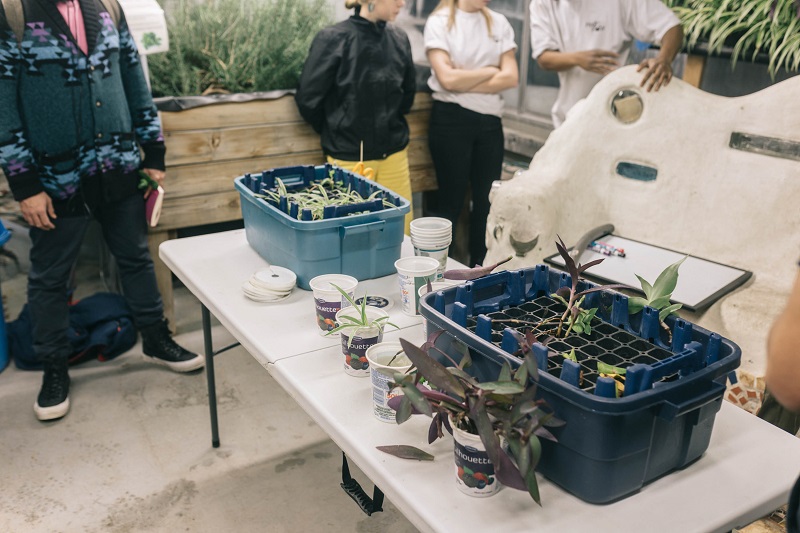HydroFlora teaches the how-tos of hydroponics at Concordia Greenhouse
“Creating nature in a small container, that’s what [hydroponics] is all about,” said Dominique Smith, the founder of HydroFlora, to sum up a Hydroponics 101 workshop he gave on Jan. 10. HydroFlora is a Concordia group devoted to developing sustainable alternatives to large, intensive farming practices. The group offers a whole hydroponics curriculum to students in the form of workshops offered throughout the semester.
HydroFlora’s interns also meet on a weekly basis to plan these educational workshops and develop hydroponic techniques, which they practice in the Concordia Greenhouse. The greenhouse, where HydroFlora’s first workshop of the year took place, was filled with students eager to learn about the basics of hydroponics, a method of growing plants without soil. The air was filled with a mixture of scents, like lavender, and students stood among various plants, including banana and grapefruit trees.
According to Melissa Donnelly, an intern at HydroFlora and a Concordia anthropology major, the self-funded group sells succulents and cacti at the Hall building market every Wednesday. Donnelly takes part in growing these increasingly popular plants by molding their cement pots.“Hydroponics is a way of going back to your grassroots, literally,” Smith said during the workshop. He explained that just placing flowers in a vase full of water is essentially hydroponic; there is no need for any nutrient solution.

Smith began the workshop by introducing the Kratky method of hydroponics. This method works best with leafy greens, such as lettuce or a spider plant. In any type of container, a leaf or the base of the plant is stabilized in water using foam or by cutting a hole in the lid, if the container has one. This way, the plant receives all of the ingredients it needs: water, oxygen and light. Smith added that one shouldn’t forget about the essential ingredients “love and patience” when growing plants.
After a few days, depending on the plant, the roots will begin to grow. “You leave it there and it does its thing,” Smith said. He explained that stabilizing the plant allows its roots to grow naturally, and the container can just be left by a window. “It’s simple and clean,” he added. The roots can tell you a lot about the plant itself, Smith explained. If they are white and hairy-looking, it means the plant is receiving enough water and oxygen. If multiple plants were placed in the same container and their roots have a yellow tint to them, however, it most likely indicates the plants are competing for nutrients.
Following the workshop, Smith gave a tour of the greenhouse’s more elaborate hydroponic set-up. Water circulates through a pipe system for irrigation, and the plants are grown in Smith’s homemade compost, which replaces typical soil. The compost is made out of coffee grinds which contain nitrates, banana peels which secrete potassium, and ground up eggshells which provide calcium—all important nutrients for plant growth, Smith explained. Although this method of hydroponics is more elaborate, the main idea is there—you can grow plants without soil.
For more information on HydroFlora and their work at Concordia visit: https://www.hydrofloraconcordia.com.




